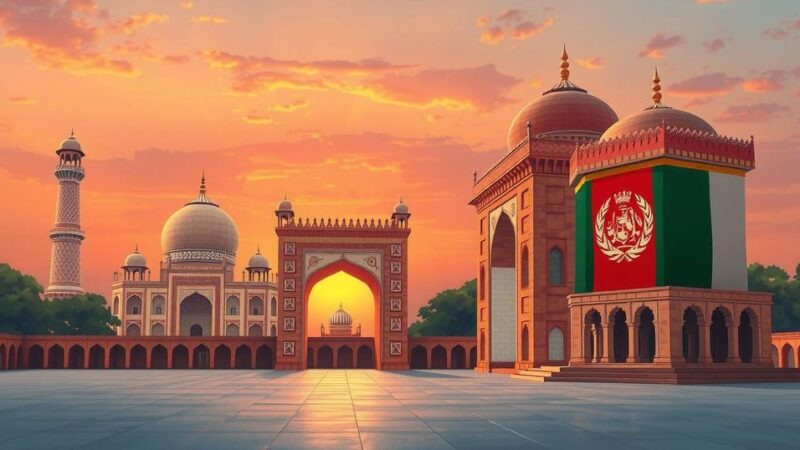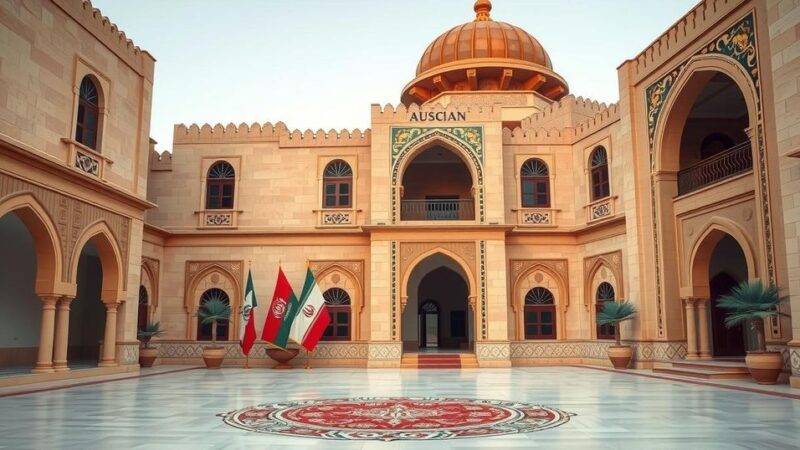The Tigray region of Ethiopia faces renewed conflict as civilian evacuations increase amid escalating military presence by both Eritrean and Ethiopian forces. Internal power struggles within the Tigray People’s Liberation Front and failed peace agreements contribute to the instability, risking wider regional conflict and drawing in external interests. Tensions remain high, underscoring the need for effective diplomatic interventions to mitigate escalations.
Civilians in Tigray, Ethiopia, are fleeing in large numbers due to fears of renewed conflict following an increase in military activity by both Eritrean and Ethiopian forces along their shared border. The escalation signals a significant decline in relations between the two nations, merely two years after the conclusion of the Tigray War from 2020 to 2022, which had catastrophic consequences for the region.
The ongoing unrest is influenced by several factors, including Ethiopia’s internal instability, a power struggle within the Tigray People’s Liberation Front (TPLF), and Eritrea’s determination to maintain its sovereignty. These elements have combined, creating a volatile situation that risks evolving into a wider conflict affecting both countries and potentially the greater Horn of Africa region.
Recent tensions have highlighted a rift among TPLF factions, particularly between President Getachew Reda’s Tigray Interim Regional Administration (TIRA) and Chairman Debretsion Gebremichael’s loyalists. Eritrea is criticized for supporting TIRA, which has become perceived as aligned with the Ethiopian federal government, further complicating their internal politics and exacerbating division.
On March 11, violent clashes erupted, forcing Reda to flee Addis Ababa after resisting arrest, while TPLF factions engaged in confrontations that led to significant territorial gains by Debretsion’s forces. Civilians are withdrawing funds and evacuating Tigray amid military mobilizations observed on both sides of the Ethiopia-Eritrea border that indicate possible future conflict.
Negotiations in Addis Ababa aimed at de-escalation have not produced lasting results, with the appointment of General Tadesse Werede as the new TIRA leader failing to alleviate tensions. Reports indicate a potential resurgence of conflict as factions within the TDF and TPLF mobilize, hinting at an imminent major confrontation between these groups and their respective supporters in the region.
The failure of the Pretoria Agreement, which aimed to stabilize the region post-war, remains a significant factor contributing to ongoing instability. Key provisions of the agreement, such as the disarmament of the TDF, have not been fully implemented, which has further strained relations between the TPLF and the Ethiopian federal government.
Ethiopia’s aspirations for access to the Red Sea have heightened tensions with Eritrea, which views these ambitions as a direct threat. Additionally, Ethiopia’s military is currently engaged in other conflicts, notably in the Amhara region, limiting its capacity to respond aggressively to Eritrea’s maneuvers.
The deteriorating situation in Tigray has significant regional implications, with Eritrea and Ethiopia becoming involved in the civil war in Sudan, each supporting different factions. Furthermore, external powers, such as the UAE and Iran, have vested interests in the region and may seek to exploit these tensions for their own strategic gains.
The potential for increased jihadist activity in the region also looms, as groups like al-Shabaab may seek to capitalize on Ethiopia’s instability to expand their influence. Such developments could further destabilize the already fragile Horn of Africa, making it a key area of concern for future conflicts.
The renewed tensions in Tigray pose a serious risk of broader conflict involving both Ethiopia and Eritrea, exacerbated by internal power struggles, unfulfilled peace agreements, and increasing military confrontations. The complexities of the situation are heightened by regional implications and the entanglement of foreign interests, indicating a volatile environment with potentially dire consequences not only for the region but also for international stability. A continued focus on diplomatic solutions and conflict resolution is essential to prevent a further escalation of violence.
Original Source: thesoufancenter.org






